We are starting on an Engineering Unit. This week’s theme was Towers. In class, we wanted to explore different materials for tower building, to tinker and figure out how to make a tower more stable, and to have lots of fun knocking down the towers that we built. We also explored reasons why people build towers. And we did art, math activities, and journaling, sang a song, and read some books
[Note: to see a bigger version of any photo in this post, just click on it!]
Everyone Can Build
Why this is a great theme for a kid’s STEM class: A simple tower is one of the first things that children can build. At 12 – 15 months, they may stack two blocks. By three years, almost every child can stack towers of ten blocks, but some children may stack many more than that, if they’ve done a lot of block play at home, or used specialty blocks that interlock allow for taller towers. The other day, I worked with a 26 month old as he stacked up a tower of Duplos that was taller than he was. Probably 40 or more blocks. So, stacking blocks is easily doable for the youngest child in our Inventors’ class, but is also a challenge that grows with a child. Our 6 and 7 year olds were challenged by experiencing different materials and learning how to stack them to engineer the highest and sturdiest tower. They also really explored the ways to make the towers more stable. (As we talked about in circle time.) We also see lots of parents and grandparents get engaged in the tower building challenge. Kids love it when the parents play along!
Building AND Knocking Down
We offered a wide array of tower building materials, and also a number of methods for knocking them down: Toilet paper tubes, blocks and pendulums; cardboard boxes and a wrecking ball; plastic cups and toy cars, and more.
You’ll notice that knocking them down was an actively planned part of the curriculum. Why? Well, we know kids will do it anyway. May as well make it a fun and completely acceptable part of the day. We’d cheer for great towers and we’d also cheer for great moments of tower destruction. But also, a goal was to emphasize the tinkering mentality or engineering process: build something, test it, refine it, test it again, start over when needed. Some children re-built with the goal of making the structure as solid and stable as they possibly could – trying to make a structure that couldn’t be knocked down. Some went the opposite way, and build structures that would fall apart even more dramatically. Either goal was perfectly acceptable!
We made up a sign about wrecking ball rules (before knocking anything down you need to get the builder’s permission, before knocking them down, ask an adult to be sure it’s safe, and so on) in case we had issues and needed to enforce rules. But we ended up not needing it as kids were managing things well. If you’re working with a group, use your judgment about what rules need to be established before playing to keep it fun and safe.
Options for Materials
TP tubes & cardboard platforms
This is one of those great recycle bin activities. It allows kids to build multi-story buildings with t.p. columns supporting each cardboard floor. They intuitively learn that one or two columns won’t support a floor, but three columns will if placed just right, and four is easy. You could enhance this project into imaginary play realm by putting out small plastic animals or dolls and they could populate the floors of the tower. Or you could add to the engineering aspect of it by having them put weights on a floor (like pennies) and see how much weight various structures could support. [Tip: when setting up building materials, don’t fill the table surface up with piles of materials… put a container of supplies on a chair next to the table to free up more table space for the actual building.]
Jenga blocks and pendulum
Jenga is a very fun game and well worth playing! And…. Jenga blocks work as a building tool. We made a pendulum by cutting one leg off a pair of tights and putting a tennis ball in it. They would build a tower of Jenga and use the pendulum to knock it down.
Cardboard box towers
You could take an idea from Irresistible Ideas of tying the pendulum to the rafters, and using it to knock down tall towers of cereal boxes. We don’t have rafters, so we built a PVC frame. For our wrecking ball, we wanted something that was heavy enough it would knock down the boxes, but not so hard that it would hurt if it hit someone. We used a one-liter plastic bottle, filled 2/3 of the way with water. We’d set the water bottle on a platform while kids built a tower under the PVC frame, then they could pick up the water bottle, and let it swing. This was popular with a wide variety of ages. Especially the knocking them down part.
Plastic Cups
Kids love building tall towers with red plastic cups, and then using a pull-back car to crash into them and knock them down. Advantages to this activity: it’s really cheap, the cups are almost infinitely re-useable (We typically only break 1 – 3 in two hours of rambunctious play), children of all ages (and adults) can enjoy, and when the cups come crashing down on your head, they don’t hurt!


One year we built the towers on a table, but then the kids had to stand on chairs to build tall towers. And the cups make a LOT of noise when they crash down. So now, we do it on the carpeted floor.
One of our older kids had built and crashed lots of towers. So we challenged her. We said “Can you build a tower using ALL these cups that the car can’t knock down?” She did it, but in a lateral thinking way I didn’t expect!
Here’s the video of a crash in action:
You can also stack cups in a variety of ways. Most people start with a two dimensional pyramid, but you can also make a three dimensional pyramid by learning to stack a little differently where one cup straddles four in the base layer. (This is one of those places where you can use a subtle hint to extend your child’s learning… just show them the basic 2-D pyramid and let them build on that all they want. Then, once they’ve mastered that, show them this basic concept of 3-D, and walk away and see what you come back to!)
Kids can also flip the cups upside down and build a tower one cup in diameter.
Mini plastic cups: I also found plastic shot glasses at a dollar store, 24 for a buck. We use a toy monster truck to knock them down.
Wooden blocks and the shake table
We brought in our quake simulator from Earthquake week, so kids can build towers and make them crumble.
Magna-tiles
We have a building toy out almost every week, so they’ve seen the Magna-Tiles before, but this was another nice opportunity to play with them. Some kids built houses or 3-D towers. I liked this two dimensional tower that one of our just-turned-three year olds built.
Keva blocks and wrecking ball
I own a KEVA Wrecking Ball. (It was from a kit that sadly appears to be discontinued.) We stack simple towers (or domino style chains) with the extra planks that come with a set, then enjoy knocking them down.
More Ideas
Check out my Tower Building at Home post to find ideas like: interlocking index cards, flat stones, house of cards, and the spaghetti-marshmallow challenge. And q-tip blow darts to knock towers down!
You could also create a simple Rube Goldberg device to knock down a tower, using Domino chains, or a car rolling down a ramp, or a ball bounced off a balloon trampoline.
Foundations
We’ve put sand and blocks in the sensory table, and encouraged kids to try building towers on the flat ground versus with the bottom block buried in the sand for stability.
Snack
We use toothpicks, grapes, and cheese to build towers, and then dismantle them and eat them!
Tool of the Week
Our tool of the week was a building crane. We were able to buy a “like new” Hape Crane on Amazon for just $25, which made it a fun addition to the class. We put it out on a table with the book Cranes
by Frisch, which is a nice preschool level introduction to the topic, much better for the purpose than Cranes by Becker, which goes into more detail than you need on all the different types of cranes. Kids could wind the crank up and down, bringing up a load… we place the crane next to a tower of some sort (like a decorated oatmeal tub), so kids can grasp the idea that you use a crane to raise material from the ground to the top of a building you’re working on.
There’s a good Bob the Builder video on cranes here, and also ideas for a toothpick building challenge (which has nothing to do with cranes, but is fun anyway!) http://www.pbslearningmedia.org/resource/bob15.pre.math.toothpick/bob-the-builder-toothpick-challenge/
Art Projects
Watts Towers
In the Los Angeles area, from the 1920’s to the 1950’s a man named Simon Rodia gathered trash and found objects (rebar, concrete, broken bottles, tiles, pottery shards, and so on) and built an iconic piece of folk art, now a national historic landmark, known as the Watts Towers. (Learn more and see a video at www.wattstowers.us/simon_rodia.htm and in this Wikipedia article.) During circle time, we read the story (see below) and then we built our own towers using pipe cleaners and floral wire for the metal structure, plastic pony beads, tiny tiles, and adhesive foam shapes as the decorations. We use styrofoam for the bases (we collect our takeout containers or packaging for a month or two before this class for this project – I would never buy styrofoam due to environmental impact, but it does work well for this project. Cardboard can work.)
Note: one book says the artist often listened to opera music while working, particularly the singer Enrico Caruso. You could play opera music while kids worked on this project to enhance the experience.
Cityscapes
We’ve played with the idea of skylines: bright squares of light on tall skyscrapers. We’ve had them cut black buildings to put on a blue background and mini post-its for the windows. (Peeling mini post-its off the pad is good small motor practice for little ones. Buy your post-its at the dollar store – the office supply stores charge way too much.) One year, I found a picture of Seattle’s skyline in silhouette. I printed it as a large mural and placed it on the wall for kids to decorate with mini post-its. Another idea I’ve had but haven’t tested: You could create an open grid with masking tape on black cardstock, paint it with white or yellow, then remove the tape… where there wasn’t tape would be the “windows” on the building.
Printing with Duplos
This was a process-based art activity, which we expected would be most popular with our youngest kids, but lots of the older ones also enjoyed it. I like using a table covered with butcher paper as a canvas with this sort of activity (as we did with the monster truck painting), because it allows a lot more freedom to spread out than small pieces of paper, plus it’s clear we’re doing a collaborative process, not creating individual products to take home.
Math Activities
Tower building is also a great opportunity for exploring measurement, another key science skill. You can measure with standard units (how many inches tall is your tower) or non-standard units (how many soda cans tall).
It’s also good for counting – how many stories tall? How many individual elements?
We put out some Unifix cubes that they could simply build towers out of and count, and we added some “printables” we found online that gave examples of patterns they could build with the cubes. (To learn more about Unifix and building math skills, check out Measured Mom and this collection of counting activities.) This year, we placed these on a table with a mirrored box which created fun reflections.
Journal
With this theme, we introduce the idea of creating written documentation of our work. We told the kids “Build all the towers you want today. When you’ve built your very best tower, whether it’s your tallest, your prettiest, or your sturdiest, call over one of the teachers, and we’ll take a picture of it. We’ll also ask you to draw a picture of it, and write a description. And if you can’t write, just ask any grown-up to help you!”
This helps the kids work on important skills: drawing from a model, writing, and describing their work. Also, keeping a record of a creation helps to imbue it with a little more sense of importance.
Circle Time
Observations and Discoveries. We started with a discussion of what they had played with during discovery time, and what they had learned.
We asked them if building towers was challenging, and they said no, it was easy. And we asked if building a REALLY tall tower that doesn’t fall down was challenging, and they agreed that it was. We asked why it was challenging. No answer. So, we said “I want to build a tower this high. Can I start at the top? Can I put my top block here and then put the other blocks under it? No? Why not?” They figured out the answer was gravity. We then demonstrated with blocks how building a tower is a battle with gravity, and we talked about how we need to have strong materials, and balance them carefully so they support each other.
We then illustrated that in general, a wider base makes a more stable tower. We took a stack of ten square Duplos. Showed how easy it was to tip over. Then we showed a stack of ten Duplos in a pyramid shape (4 in a row on the bottom, then 3, then 2, then 1). Much harder to tip over if you press from the sides, but still easy if you push on the flat wall. Then we showed ten Duplos in a 3 dimensional pyramid (a “rectangle” of 6 on the bottom, then a line of 3 blocks, then one on top) – much harder to knock over. (Another idea is to have them stand on one leg and ask if they’re stable. Then stand with both feet close together. Then stand with feet further apart. What feels most stable?)
Song
I found lyrics for a block building song online at Preschool Express. They say the lyrics were adapted from a poem by Peggy Sloan. There was no music. The first time I saw them, I made up a little tune I liked, but then I forgot what it was. The second time I looked at them, I realized I could make them fit the tune of the Final Jeopardy. So, I played the tune for my class (which many kids and all parents recognized). Then I taught the words (which I had printed and posted) and we sang it through a few times.
Pick a block to put on top.
Careful now, don’t let it dro-o-o-o-op!
Higher, higher – up you go.
Take your time, just do it slow.
Balance one block, two blocks, three
See how tall your stack can be-e-e.
Pick a block to put on top.
Careful now – don’t let it drop!
Discuss: Why do people build towers?
I had found online, and printed, photos of: fire watch towers, lighthouses, castles with towers, water towers, grain silos, Manhattan, the Eiffel Tower and the Space Needle. I asked the kids why people build towers, and I pointed out the pictures to give them some hints. We came up with these reasons: they let you see a long distance (good for fire watch and other lookouts), they can be seen from a long distance away (lighthouses help ships avoid rocky shores), they are easily defensible from attack, they use gravity to create water pressure, they’re a compact way to store a bulky thing like grains, they allow a lot of people to live in a small geographic area, and they’re pretty / distinctive and are good for landmarks.
Books:
We read Dream Something Big by Aston, which tells the story of the Watts Towers with beautiful collages by Roth. An alternative would be The Wonderful Towers of Watts
by Zelver, illustrated by Lessac. I liked bringing the story of Sam Rodia in to class, because it brings in history (he started building almost a century ago), social sciences / culture (telling the story of an immigrant), art (the towers themselves AND the book’s illustrations of the towers), the idea of building beauty from other people’s junk, and dreaming big and creating something unique.
Alternate Books
- Let’s Try It Out with Towers and Bridges : Hands-On Early-Learning Activities by Simon looks great! But our library doesn’t have a copy.
- Block City
which is a poem by Robert Louis Stevenson, written in 1883 about the joys of building with blocks and imagining faraway lands. The version our library had was illustrated by Wolff. Amazon stocks one illustrated by Kirk, and the description says it also includes follow-up activity ideas and a song.
- Zoe’s Tower
by Rogers is a lovely book about a girl leaving home, going for a walk through the woods and the meadow to her special hideaway, then returning home. It is lovely, but really only tangentially about a tower, so we didn’t read it in class.
- How Tall – Wacky Ways to Compare Heights by Weakland is a fun, silly read-aloud that is a good tie-in to talking about standard units of measure. (How Tall Is Tall?: Comparing Structures is a fine non-fiction book for ages 6 – 8 about measurement, which includes examples like a house is 6 children tall, an electrical tower is 6 houses tall, Eiffel tower is one Golden Gate bridge plus one wind turbine tall. Not an interesting read-aloud.
)
- Changes, Changes by Hutchins is a wordless book which shows two dolls building a block house that ‘catches fire’, then re-building their blocks to be a fire engine to put out the fire, then re-building them to be a boat to sail away on all the water from the hose, etc.
Nice for ages 3 – 5 as an illustration of imagination.
- When I Build with Blocks by Rogers.
- Bring Me a Rock!
by Miyares. It is a story of an arrogant insect king who demands that other bugs bring him rocks. They build a tall tower that he reclines upon. But it’s unstable and starts to tip, and the littlest bug (who the king previously derided saves the day by adding a pebble shim to the bottom of the tower to stabilize it.
- Other options: Sky Boys: How They Built the Empire State Building is a nice history piece for kids over age 5. Skyscrapers by Pettiford is interesting for elementary school kids to look at.
Videos
There’s a Curious George episode called Home for Pigeons (amazon prime, season 1 episode 2)and it has a GREAT companion guide: http://www-tc.pbs.org/parents/curiousgeorge/activities/pdf/CGDG_02a_engineering.pdf. There’s an episode of Daniel Tiger’s Neighborhood called “O Builds A Tower.” (Available on Amazon Prime where it says it’s season 2 episode 8 ) Owl tries to build a tower, it falls down. Daniel encourages him to try again. He builds and it falls again, then they use a book for ideas for how to build it better. Great for kids age 3 – 6. Pingu Builds a Tower. Parents, watch with them, narrate what they’re trying – talk about what works and what doesn’t. (Amazon Prime, season 4, episode 10).
Note: All the activities described in my posts are from Family Inventor’s Lab, a parent-child cooperative class in Bellevue, WA. We are a play-based, STEM focused class for preschool through early elementary (kids age 3 – 7). We do a wide variety of fun, hands-on activities to learn about Science, Tools, Engineering, Nature, and Art. We also sing songs and read stories. Most of our activities are cheap, easy, and use everyday materials that most families would have in their homes (or their recycle bins!), so that our activities are appropriate for classroom teachers, parents who homeschool, or after school programs. This post includes Amazon affiliate links. I do receive a small fee if you click through on those and then purchase anything on Amazon.
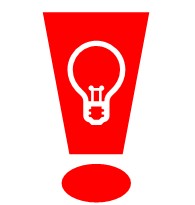
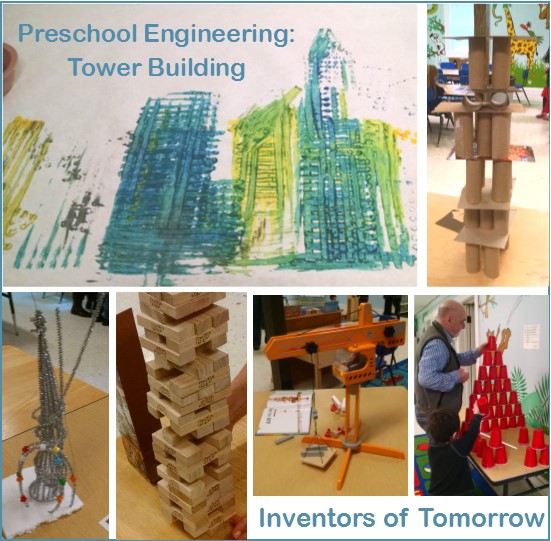

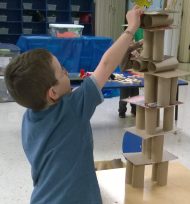

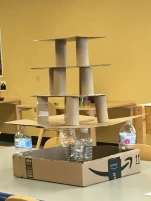






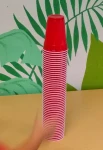
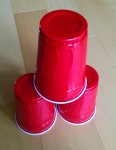
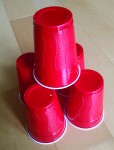
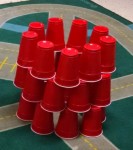

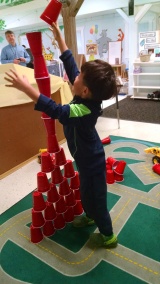
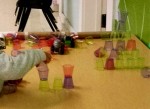
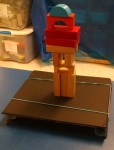
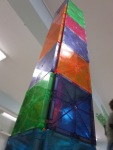


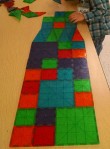


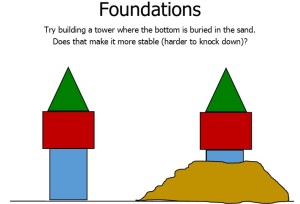

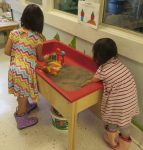

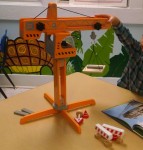
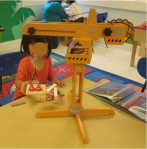
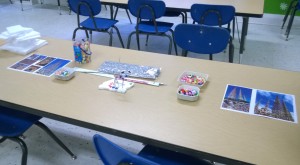




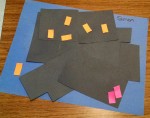
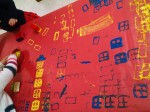








[…] Engineering: Towers […]
LikeLike
[…] KEVA Wrecking Ball was a lot of fun in our week where we built towers. (Part of our engineering curriculum is about the idea of building something, testing it, then […]
LikeLike
[…] paper roll bowling works just fine.) For a fun bowling variation, try pendulum bowling. Or create a wrecking ball to knock over […]
LikeLike
[…] Towers, Bridges & Tunnels, If I Built a House, Contraptions and Rube […]
LikeLike
[…] Theme: Towers […]
LikeLike
[…] Theme: Towers […]
LikeLike
[…] measuring cups, plastic dishes for practice nesting things; sticks and rocks to stack into tall towers, an empty bottle from the recycling bin and some dry beans to drop […]
LikeLike
[…] Toys when we study levers, we use gears on wheel week, a KEVA Wrecking Ball and Keva blocks on towers week, Magna-Tiles when we study light and shadows (note, Playmags are much cheaper than […]
LikeLike
[…] Tall Structures. Build a tower of food, also known as a fruit kebab: bring bamboo skewers, and fruit, cut into cubes… bananas, melon, blueberries (whole), strawberries, pineapple… Kids build their tower on a skewer, then eat it. […]
LikeLike
[…] Give kids anything they can stack. Have them compete to see who can build the tallest tower. […]
LikeLike
[…] Demolition: In our engineering class on Building Tall Structures, we build all sorts of towers and knock them down with a variety of demolition methods. Here you […]
LikeLike
[…] our 11 week engineering unit, we study Simple Machines, Electricity, Ways to Build Tall Structures and Strong Structures, Building Houses and Cars and Contraptions. We begin the unit by discussing […]
LikeLike
[…] Build Towers – Out of almost anything… then build pendulum wrecking balls to knock them down with. Challenge kids to build taller or build stronger. […]
LikeLike
[…] if they’re already building a tower, challenge them to make it taller. Or make it stronger. Can it withstand a toy car crashing into it […]
LikeLike
[…] cubes, cereal boxes, PVC pipes, rolled up newspapers, and more. (Check out our lesson plans for towers and […]
LikeLike
We have opened the workshop for a week of fun, creativity, and of course — engineering! Over the course of a week, campers will invent new machines and explore creative design solutions using the Engineering Design Process. Discover how a wind-up toy works and design their own drawing robot inside the Engineering For Kids Inventor s Workshop. During this week, campers will have an opportunity to explore both the design and programming roles of hardware and robotics engineers!
LikeLike
[…] build a robot, kids will use some of the engineering skills they learned when they built towers and strong structures. Sometimes an initial design requires refinement, like this robot who started […]
LikeLike
[…] gears on wheel week, K’nex for Simple Machines, a KEVA Wrecking Ball and Keva blocks on towers week, Crystal Climbers and Magna-Tiles when we study light and shadows (note, Playmags are much […]
LikeLike
[…] For more ideas about building towers, including links to fun videos about tower building (Curious George, Pingu, and Daniel’s Tiger all have episodes), check out my Towers lesson plan. […]
LikeLike
[…] when we study levers, we use gears on wheel week, K’nex for Simple Machines, Keva blocks on towers week, translucent blocks and Magna-Tiles when we study light and shadows (note, Playmags are […]
LikeLike
[…] Photo from Inventors of Tomorrow […]
LikeLike
[…] Source: inventorsoftomorrow.com […]
LikeLike
[…] we use gears on wheel week, K’nex or Duplo’s Simple Machines kits, Keva blocks on towers week, translucent blocks and Magna-Tiles when we study light and shadows (note, Playmags […]
LikeLike
[…] Solo cups or plastic spoons, and I asked if I could take them home and wash and re-use them (for tower building and spoon catapults) rather than having them go in the […]
LikeLike
[…] For LOTS more ideas about building towers, books to read, videos to watch, tower crafts, and more, check out my lesson plan for our two hour session on Towers. […]
LikeLike